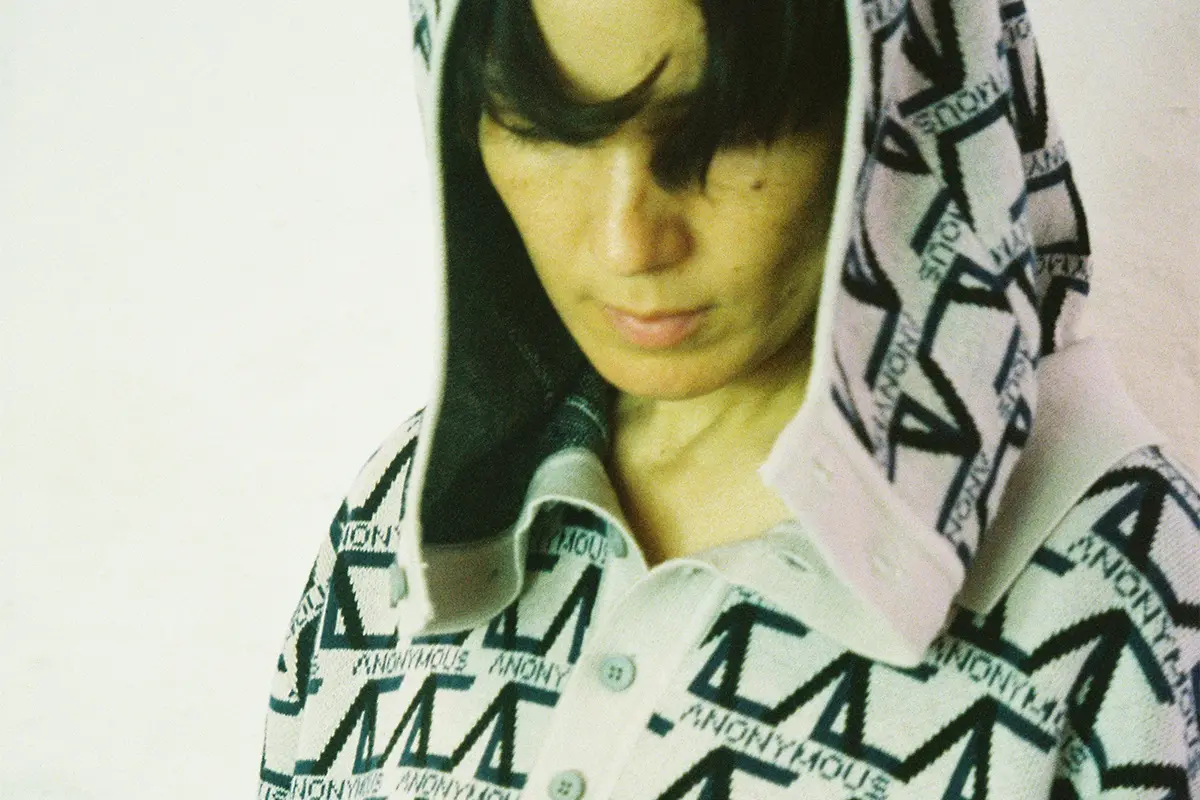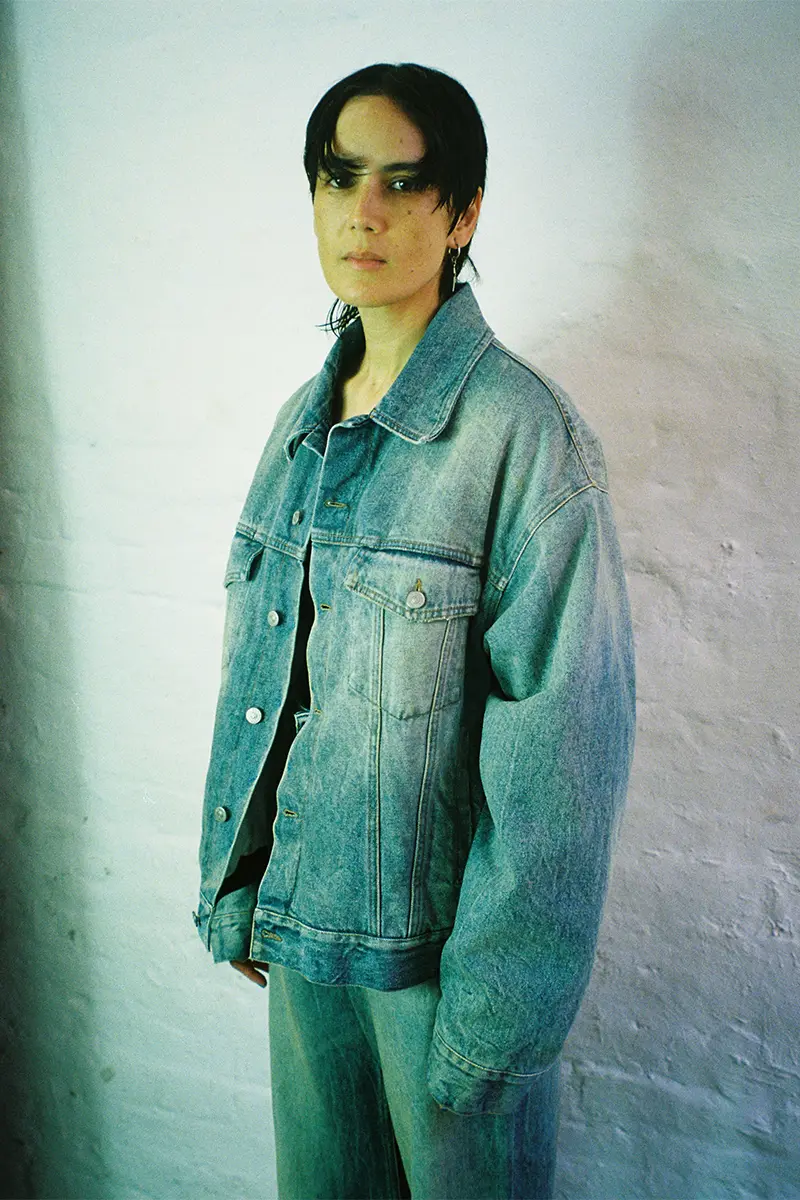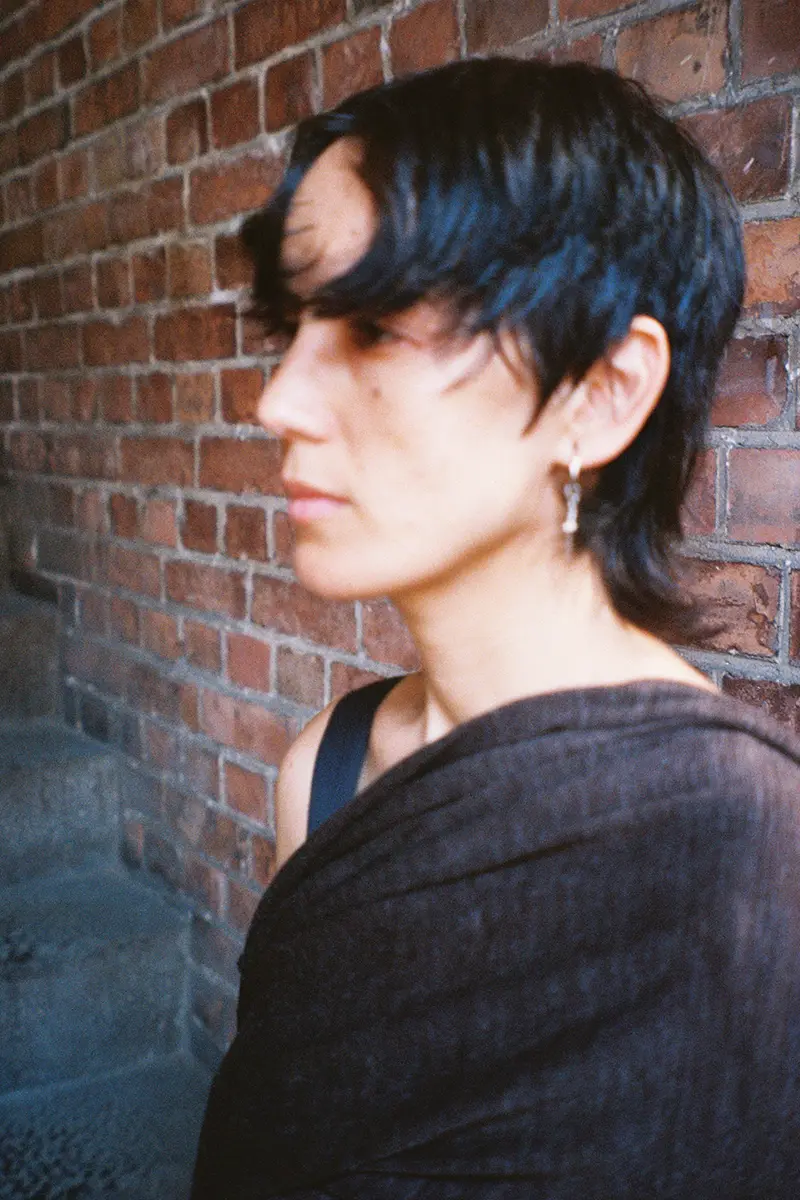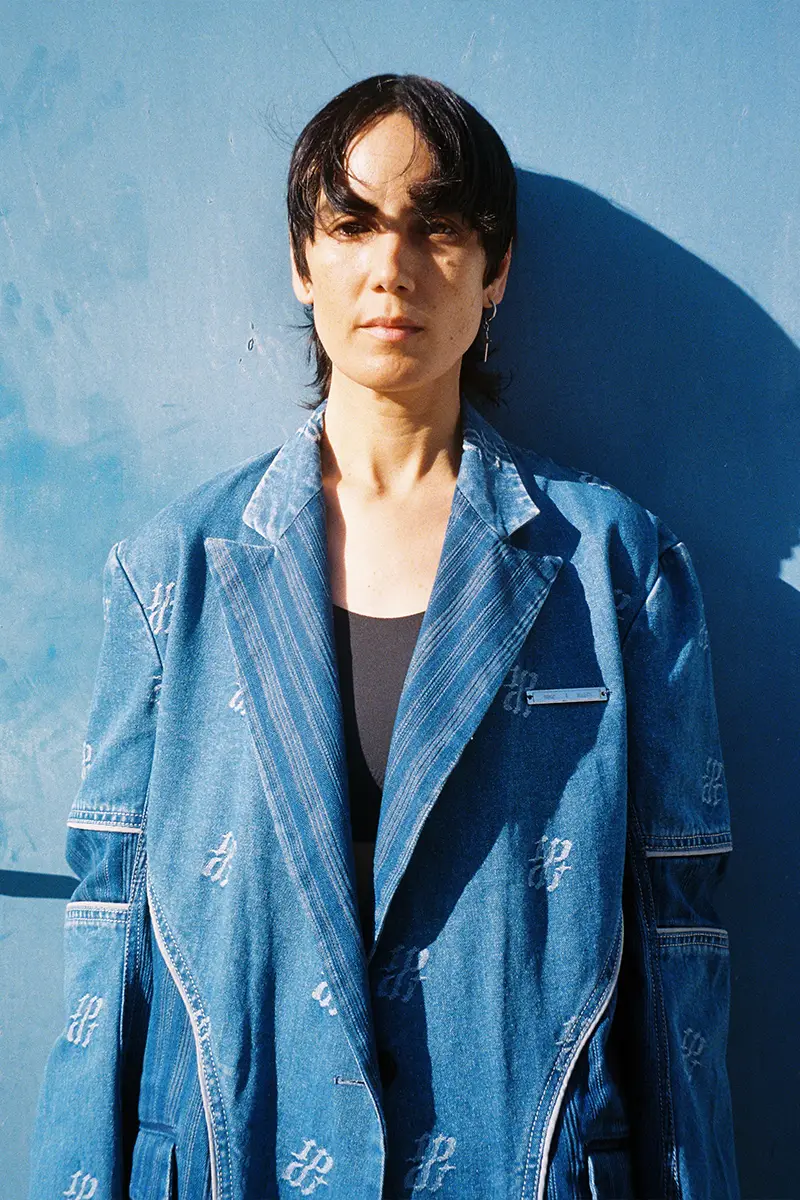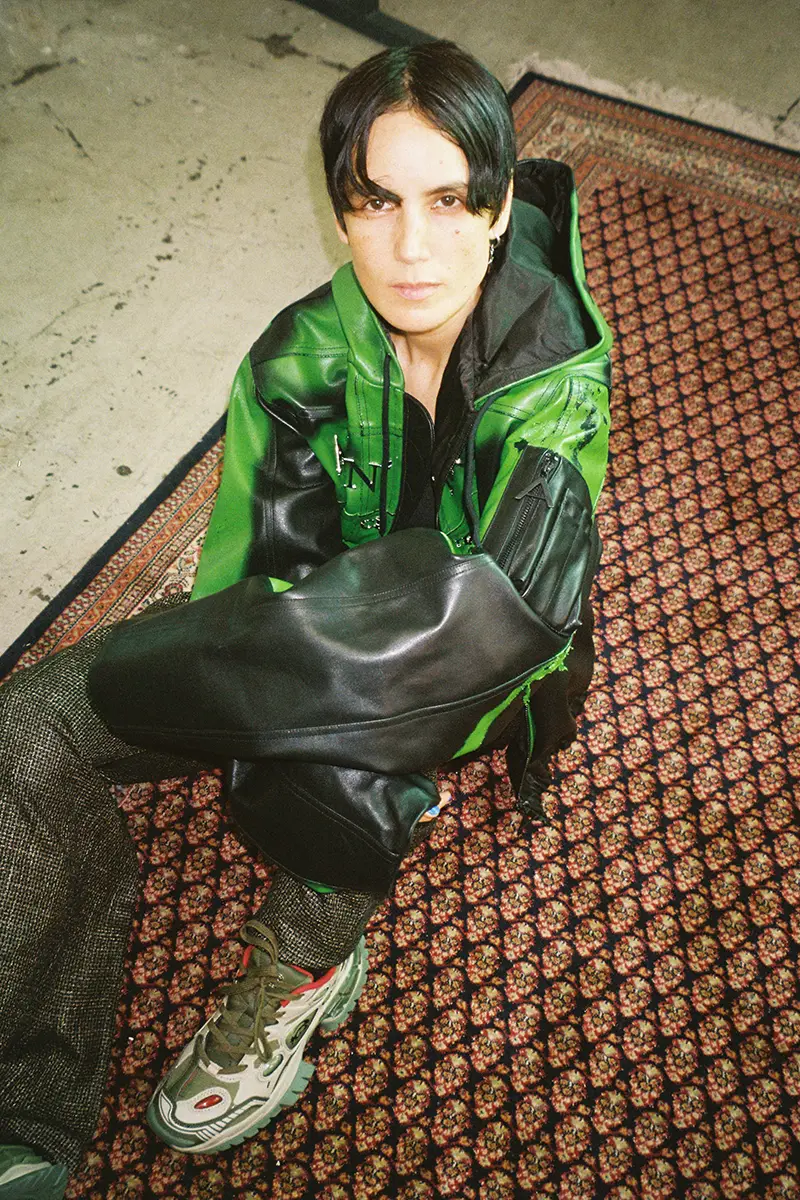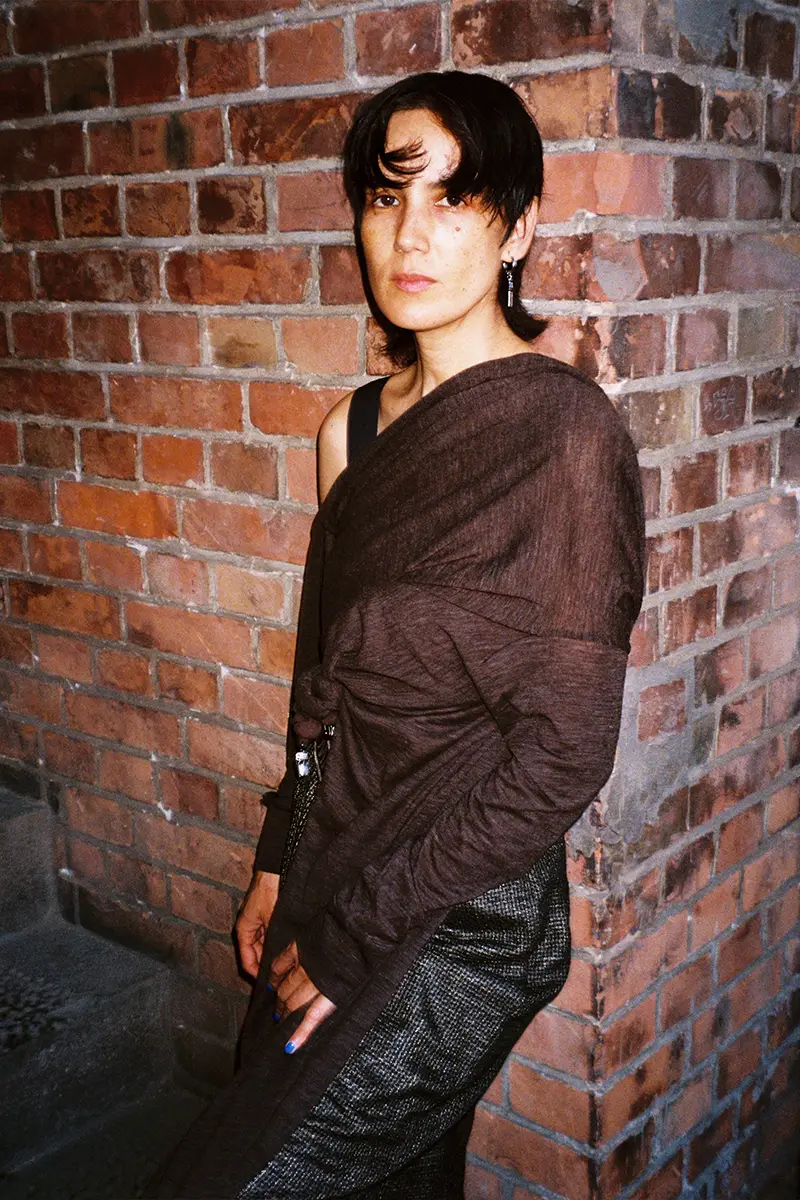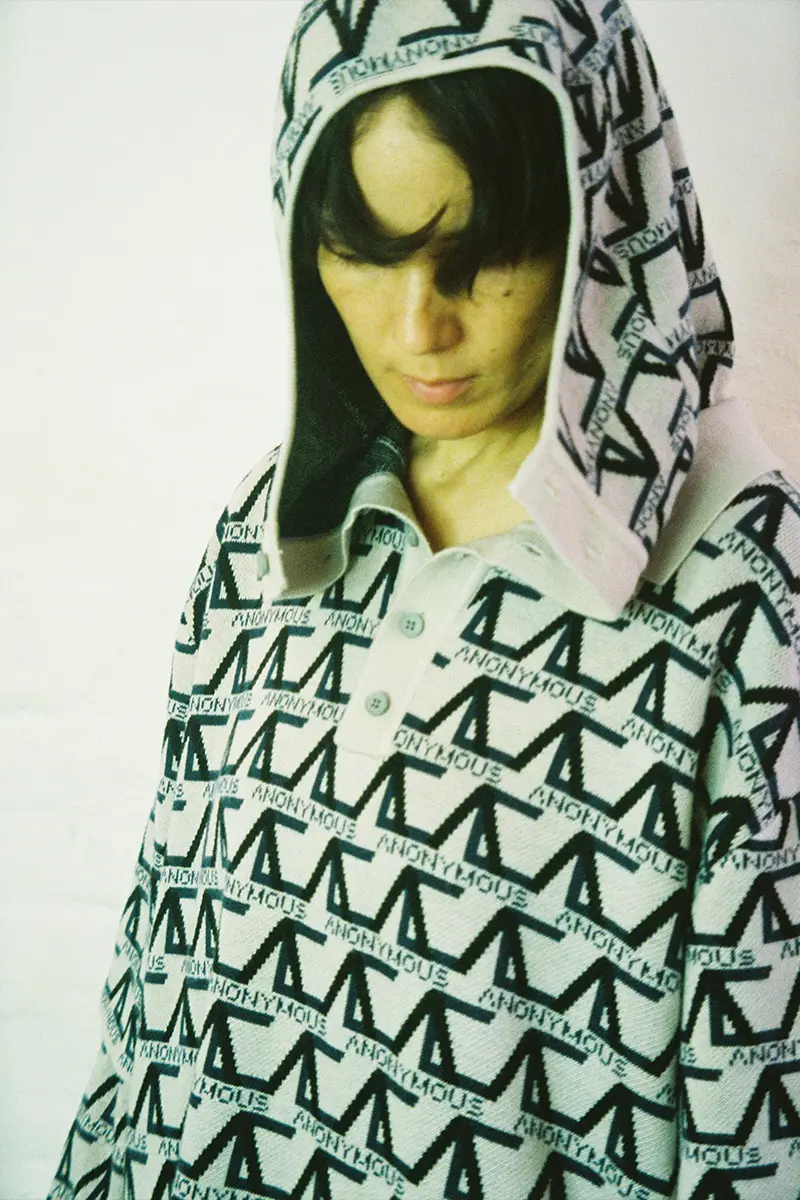«The industry has opened up, the community has opened up. It is way more diverse in terms of gender, sexuality, and color». Kim Ann Foxman on raves music, photographed by Spyros Rennt
Kim Ann Foxman’s interview with Lampoon about rave culture and Djing
«I believe that performing at the end of the world would be incredibly exciting. Then I can play all of my favorite emo songs and perhaps some humorous ones to end on a happy note. It could sound a little morbid, but I would choose something epic». And it doesn’t get much more epic than that when it comes to events the Hawaiian DJ would choose to play for.
Kim Ann Foxman juggles rave energy, classic house, and experimental electronics. Running her egalitarian Firehouse imprint she aspires to the art of escapism, delivering it with a straight face. The DJ eschews convention, embracing a genuine perspective on dance music whether she’s hosting her mark or delivering dynamic studio work as a producer, her energy infectious.
Having first emerged in San Francisco’s freewheeling rave scene, Foxman revitalized the New York club scene as part of Hercules & Love Affair, now running her own Firehouse Recordings and self-directed labels. Her productions synthesize raw house, propulsive 303s, and emotive techno with her new band project Pleasure Planet.
How did Kim Ann Foxman emerge in the rave scene?
Kim Ann Foxman is one of those rare visionaries who celebrate the golden era of authentic dance music whilst maintaining a fluid understanding of its imminent and intriguing future. After stepping away from her vocal duties in New York’s neo-disco collective Hercules and Love Affair, she is now carving out a solid reputation as a producer, DJ, and founder of the label Firehouse, which has recently released EP by Richard Sen, Kasra V, Winter Son and Jozef K amongst others. Kim’s rough and raw mix of rave energy, classic house, and more experimental electronica reflects her eclectic upbringing. «There was a small, tiny scene in Hawaii when I was a teenager, a small underground rave scene», the DJ explains.
To be part of a community – Kim Ann Foxman: my tribe is made of old-school ravers
Having spent time soaking up the vibrant corners of San Francisco’s nightlife scene and becoming a resident at an experimental gay nightclub in New York City, she has a deep understanding of the music that drives the underground. «I got into it in Hawaii, but I would say my most informative years was when I moved to San Francisco when I was 18. I moved there to go to college just to rave. It is where I started properly». Kim has cultivated a loyal club cult following around the world and is in high demand as a DJ. «I invite different people to be part of my community. My tribe is made of people who are a mixture of old-school ravers and music heads who are probably around my age, a little bit of an older-than-this-younger era popping off right now».
Her understanding of the music is also evident in her radio show appearances and work at record stores. She is a true tastemaker. Her approach is honest and unflinching – she plays what makes her happy, and people naturally respond to that. «It’s always been like an exchange of synergy between the crowd and the DJ. If I’m receiving their feedback, and I feel that energy, it just gives me It feeds me more, and then I feed them». Kim Ann’s most memorable moments were, the raves where she would lose herself in the set and crowd. She remembers her longest set in Chile where she played for nine hours. «I couldn’t stop because there was no one to take over. It was one of these organic situations, I just kept going».
Kim Ann Foxman and the community of San Francisco’s night scene
Born in Hawaii, Kim Ann Foxman spent her formative years engrossed in the last gasp of San Francisco’s rave scene. «That’s where I learned the most and it’s what’s stuck in my memory that was the golden era of my experiences in underground dance music. I also started to make electronic music when I was in San Francisco in the late 90s. Got my first drum machine and sampler. I started exploring the production side as well while I was in San Francisco before I moved to New York».
She eventually moved to the Big Apple where she helped transform the city’s club landscape through her residency at the infamous NYC party Mad Claims at the Hole. It wasn’t long before she was recruited by NYC neo-disco outfit Hercules and Love Affair as a vocalist, bringing the band to the height of their popularity. It was when Foxman returned to her passions of DJing and producing raw electronic music that she began to thrive. «I was a DJ before I was involved in Hercules and Love Affair, but that was a platform that made me visible at a time when it was hard to enter the international DJ world. It was also hard for me, to show that my sound as a DJ was not what I was known for, what my face was known for while being in a band and that it was someone else’s project, essentially».
I felt like I had to struggle in a few ways
Unfazed by trends, her productions such as Return It and Creature showcase her unique take on club-constructed house, blending rugged stabs with euphoric melancholy. Her celebrated DJ sets rock dance floors across the globe and she’s now releasing material on her record label, Firehouse. «I felt like I had to struggle in a few ways. One of them was getting a good time slot. Because it was kind of a boys club, especially being someone that looks queer or gay. Things did feel a bit unfair and it was a bit frustrating».
Pleasure Planet album – Kim Ann to grow her music career and paying homage to the rave genre
With her unique blend of pop and electronic dance music, Kim Ann continues to grow her music career. She is a multi-instrumental singer-songwriter who has been recognized by critics for her ability to evoke emotion and connect with audiences on a deep level. «For me, it’s easiest to draw off personal experiences. I prefer to write lyrics that you can relate to, or feel some kind of emotional response to. I tend to use personal things that I’ve experienced like love, heartbreak, friendships, struggles, and sadness. My latest project Pleasure Planet is more about my personal experiences with psychedelic journeys. It’s still personal. I tend to draw upon that, because you can tell the real story and maybe someone can connect with it».
In addition to her vocal prowess, Kim also excels as a guitarist and pianist. Her early choice to remain semi-anonymous behind a mysterious persona and sunglasses encouraged listeners to focus on her as a musician. «When you meet someone who tells you that it helps them through a hard time or even if the words might seem vague it’s a real experience. I feel like somehow people can apply it to their lives, or maybe a time that they’re going through. Words can be impactful and have a personal effect on someone».
The post-rave album Pleasure Planet by Kim Ann Foxman
One of her latest projects includes finishing an album. It’s a band partnership, and the name of will be Pleasure Planet. «Because it’s my first full-length record, it holds a place in my heart. I’m still attempting to predict how it will emerge. It’s a comprehensive journey with music you can listen to at home and additional dance tunes. Vocals are featured on the post-rave album. For me, it’s a personal project, less like DJ tunes and more like something organic». Kim Ann Foxman explains how «the Pleasure Planet project it’s thought and cared for» with nothing left to chance when it came to its development.
Pleasure Planet album will be released on vinyl
As the relationship with the band grew so did the tunes that unrevealed themselves in organic ways. Even though this might be the last collaboration before going solo, the DJ feels the years she invested in developing the tracks are as meaningful as they can be. Coming out between this year and the next, the Pleasure Planet album will be released on vinyl. Whilst the album has just been completed, they’re waiting for a particular person for whom they had to stand in line to perfect it. The band and Kim are collaborating with Matt Colton to get it down, opting for a label to release it instead of opting for self-release.
«We spent years working on it. We don’t pass it back and forth since we operate best when we are together. I travel a great deal, and the project is in New York, but the synergy that exists between us in the room is what it’s all about. It becomes a comprehensive process. We must first mix it, then master it, and then identify the release location, adding a significant wait if we want to press it on vinyl; sometimes you have to wait for the manufacturer to be ready for you. It’s okay though because it provides us some extra time to prepare the visual assets».
Emerging from the Hawaiian scenes. Kim Ann Foxman’s first rave moments
Whether running her own Firehouse Recordings label, delivering dynamic studio work, or deejaying to packed dancefloors around the world it’s clear that Kim Ann Foxman is cruising on her wavelength.
She first got her feet wet in the rave scene as a teenager at an all-ages club in Honolulu, circumventing her mother’s curfew by bartending and mixing non-alcoholic rave smoothies. «I got a job at a club. It was an all-ages club because I wasn’t old enough to go into the bar. I started working there in high school. It was sort of a loophole for me to stay out late because my mom was kind of strict».
The energy she experienced in the clubs informs her productions, fast-paced, jacking affairs with movement at their core. Rugged stabs mixed with euphoric melancholy remain a defining flavor, but, with each release, she’s explored further realms of her sound. These days, she splits her time between New York, music festivals around the globe, and her childhood home of Hawaii.
The spirit of those hazy dance floor moments remains at the forefront of her mind. Whether it’s through her dynamic DJ sets or productions, the energetic ‘get me out of here’ euphoria permeates her entire musical outlook. Her latest solo release Return It embodies the pulsing energy of downtown New York’s music scene, with jacking, high-octane productions constructed with the purpose of movement in mind.
Raving genre and the DJ club culture – Everyone can join the community. Kim Ann Foxman on the industry that opened up
In addition to providing a sense of being part of a community and a space for self-expression, rave music also offers a framework for spiritual healing, incorporating a mix of fast-paced beats and repetitive synth melodies. The uplifting lyrics and emotional vocals of these tracks create a sense of excitement and energy. These elements are key to the rave culture, and they have become iconic anthems for the scene.
In the early 1990s, a new style of dance music arose, called hardcore. This genre combines fast beats and repetitive synth melodies with emotional vocals and dramatic expression. The music evokes strong feelings in listeners and is a popular choice for DJs.
Although it began as a subculture within the disco scene, rave music has become a mainstream phenomenon, going out of the community. The music combines trance-inducing hip-hop with club beats and has a wide audience. Some ravers use club drugs to enhance their experience. Raves also feature a diverse group of people and are held in a variety of locations, including abandoned warehouses, empty apartment lofts, and open fields.
Today, raves are more sophisticated than ever before
Today, raves are more sophisticated than ever before. While the renegade spirit is still alive, the vibe has shifted from a focus on big-name headliners to a greater emphasis on racial and gender diversity in line-ups and among partygoers.
«The industry has opened up, the community has opened up. It used to be quite close with all the same big names and rotation. And now we have this whole new kind of younger energy in the mix, and it’s way more diverse in terms of gender, sexuality, and color. I came in in an era that was quite close, there weren’t even that many female-identifying artists at the time, and it was a novelty then. There are a lot of representatives that can inspire people to follow that dream, if that’s what they want to do, too. And they do have a chance to do it. Whether it’s DJing or music, there are a lot more Trailblazers now, for everyone. Everyone can join the community».
Kim Ann Foxman music genre and community: Rave club culture is a fusion of genres
The fusion of dance music and global styles like reggaeton, baile funk, and amapiano has made for an exciting musical landscape. The resulting combination of open-mindedness and commercialism has led to a rise in interest in the rave culture. Held in abandoned warehouses and apartments, the parties are attended by people from all walks of life, often being associated with hedonism. The genre is rich in symbolism and has influenced the lives of many young people much like it happened to Kim Ann Foxman, who embraced it and continued to innovate. «We need more voices, we need more representatives. I see it happening and we’re in a good place more than ever. As far as that goes».
When it comes to technology, we are starting to grasp the beginnings of a new era where humans meet machines in many different ways. Kim, much like many of us, has mixed feelings about it. Social media, and artificial intelligence all come with frustrating features that trigger creatives’ nostalgia for old-school art. Instagram and TikTok have replaced SoundCloud and lifted the standard toward commercial peaks. While adapting and looking at the bright side seems the fair option, there are always ethics and rights to look for.
In Kim’s opinion, technology made the whole industry more diverse and inspiring, but with artificial intelligence, she confesses: «I haven’t played with AI myself yet. I would prefer for it to create more new things rather than just reshape old tunes. Because a lot of what it is doing right now is reshaping already existing songs or voices».
Rave culture, an antagonist genre in the digital era – Kim Ann Foxman on Artificial Intelligence
Nothing could’ve changed the rave scene more than social media, something that cast away much of the creative mystery so tightly attached to this music genre.
Foxman debates the use of new technologies such as Artificial Intelligence while hasn’t dipped her toes in these instruments just yet. «I do see it being a powerful tool that can be helpful. There’s no way to avoid it at this point. We’re just heading there, we need to learn how to work with it in positive ways. The part that kind of freaks me out is when it comes to using things without permissions, like the voice, that will change things for a lot of artists».
The American DJ stands up for traceability and authenticity. «The question is to who that truly belongs to? Did you create it? Do you own it? I understand all of these concerns». There is one voice that Kim Ann believes should remain in history with consent. For her, there is no replacement for David Attenborough’s contribution to nature documentaries, and this is a place where AI can do its magic.
Technology affected not only the sound but also the way we archive tunes and music. The popularity of rave music has fueled a demand for vinyl dance records. DJs and collectors are willing to pay high prices for rare early ’90s hardcore breaks and classic trance. «Everyone was collecting DJ rave cassette tapes at that time. I still have my tape collection. I sort of just dove into the scene there. It was great in the mid-90s».
Kim Ann Foxman started collecting underground dance records that were on, the sounds she was hearing at the time she was searching for tracks.
DJ Kim Ann Foxman rave music classics: Bass Been Twins, One Love
«At that time, we didn’t have Shazam so I would go into a record store with my Walkman, and I would be listening to rave tapes asking myself ‘What is this all?’ That’s where a lot of my secret gems come from».
While easier to instantly grasp the music stuck in one’s head, the DJ feels nostalgic about the times when a song would remain stuck in her head for twenty years just to stumble upon it in a garage sale. Some of her sets pay homage to the collection she curated throughout the years, shying away from anything mainstream.
«I often like to throw in a little curveball, something from my record collection that I used to hear when I was out. Maybe it’s an old breakbeat record or maybe it’s from my golden era rave days. For example, Bass Been Twins, One Love is a track that was quite epic during my time, but people don’t know it. You can’t find it digitally». In the end, there’s something about the unknown that makes art and music thrilling. «A DJ turns me out if they’re playing tracks that I don’t know. That impresses me».
Kim Ann Foxman interview with Lampoon, photographed by Spyros Rennt
An island-born kid dreams of a life in clubland, hits the big city and, with a little bit of luck and a lot of hard work, emerges as one of dance music’s leading figures. A lifetime in clubbing has informed Kim Ann’s studio work as well, with her music—much of it coming out on her own Firehouse label—synthesizing the best elements of raw house, propulsive 303 material, emotive techno and even the occasional hint of trance into a hugely satisfying whole that lives somewhere between the weird and the wonderful.


